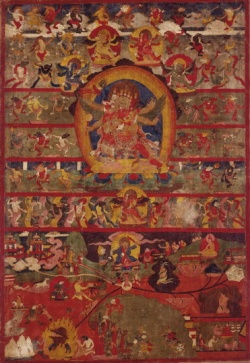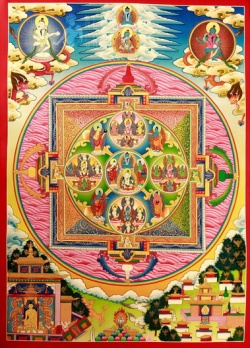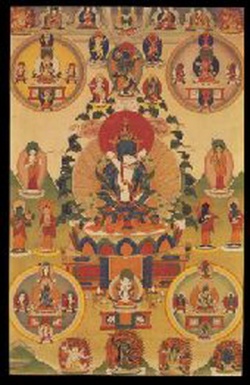Is there a moment of death?
Is there a moment of death? Millions of death certificates provide abundant evidence—or do they? Many world religions also envision an awesome moment in which the soul departs from the body to continue its existence in another form. Furthermore, the moment of death is the signal for an abrupt change in society's way of dealing with the individual: Medical attention gives way to mortuary services and rites of passage; the death is announced through formal and informal channels; personal records are reclassified; the deceased person's assets are redistributed (or become the subject of conflict and litigation); and there is additional tension in situations such as organ donation and cryonic suspension. In each of these scenarios there is often a sense of urgency to move on to the next step whether this be the removal of organs to save another person's life or the preparation for cryostasis. The moment of death, then, has both symbolic resonations and practical consequences. Nevertheless, despite the definitions, assumptions, and beliefs that surround it, the moment of death can be quite an elusive concept. Is There a Final Moment of Life?
The most common assumption in Western society is that life gives way to death in a "razor-thin" moment. This image has been reinforced by numerous movie and television scenes in which a sick or injured person suddenly falls silent and lies still, the struggle is then over. These depictions are also consistent with the inclination to see much of reality in dichotomous terms. One either wins or loses; one's conclusions are either right or wrong; a person is either good or bad, a friend or an enemy, and dead or alive. This way of thinking has the advantage of reducing complexity and ambiguity, but the disadvantages of oversimplification and premature judgment. By contrast, Eastern religions and scientific thought are more likely to emphasize process and flow. Buddhists and Hindus, for example, regard perpetual change as a basic feature of the universe. Within this worldview, living and dying can be regarded as a tidal play of forces that occur throughout life.
Death certificates seem to support the assumption that there is a clear and definitive moment of death when time of death is recorded. Often, though, this information is based on estimates rather than direct observation. A resident of a long-term care facility or a hospital patient may have been seen alive at Time A and then discovered dead at Time B. Precisely when the death occurred between A and B is unknown, but a time is recorded to complete the certificate. It is not unusual for the death certificate to be signed by a physician who was not there at the specified time. There can also be a strategic basis for selecting the moment of death. For example, a patient who dies in the operating room may not be pronounced dead until moved to a postsurgery unit.
No reliable information is available on the number of deaths that are actually witnessed, whether at home, in the community, or in medical care settings. Patients enrolled in hospice programs seem to have a better chance for companionship at the time of death, but even then this does not always happen. The collective experience of caregivers and researchers suggests that many people pass from life to death without another person at their side. Nobody knows if they experienced a definitive moment of death.
It can be difficult to identify a moment of death when the person has not been able to respond and communicate effectively for some time. This situation may arise after a stroke, drug reaction, or catastrophic failure of the cardiovascular or some other system. A nurse could detect the cessation of vital functions if the patient is on life support, and this might be considered the moment of death. Not all unresponsive patients are under this kind of intensive observation, however, and nurses may have conflicting duties to perform even when they are trying to monitor vital signs.
The moment of death has become a more problematic concept with the changing definitions of death and the technological advances that can keep basic physiological systems going even if there is no discernible mental functioning. The person may seem to have perished some time ago, and the moment of death may become a matter of professional, family, and legal decision making. Even a slight possibility of recovery, though, can create the lingering question of whether or not the moment of death has actually occurred.
How one decides to define the moment of death also depends on one's willingness to consider rigor mortis and other physiological processes that continue for some time afterward. The person is dead, but organic processes still have their sequences to complete. The Mystery of the Moment
The moment of death is not as clear and firm a fact as many people have often supposed. It has been defined and assessed in many ways throughout history, and there may be other changes yet to come. For personal, religious, and bureaucratic purposes it is often useful to assume that a specific, identifiable moment separates life from death. Biomedical research and experience offers only mixed support for this belief. The body becomes cooler after death, for example, but people have survived at even lower temperatures. A sudden "flat-line" shift in electrical brain activity is considered evidence for death, yet the readings may be continued for another twenty-four hours just to be sure.
Nevertheless, there have also been many observations to verify an obvious moment of death for some people. Companions have seen a person change in an instant, as though a subtle wave had passed through them (or a subtle something had passed from them). Everything seems to be as it was a moment before—except that a vital quality is missing and a shell of the person left behind. The sense of moment has occasionally been intensified by the feeling that an energy has been shared from the dying person to the companion. Known as the "death flash," this phenomenon has not been successfully studied but has experiential validity for those who feel that they have been part of a mysterious transfer.
The moment of death is unlikely to be the same for the dying person and the other people who may be in attendance. The dying person might have a final experience before the signs become visible to others. Similarly, a person might be considered by others to have passed into death but actually retain some form of mental life, possibly even continuous awareness of the situation. Still again, death might occur so suddenly that the afflicted person has no time to register any experience. Battlefield deaths have provided many examples. Some soldiers killed in the battle of Gettysburg, for example, remained frozen in their active positions, such as scaling a wall. For these victims there may not have been a moment of death, but their last moments remained as though fixed forever in time for those who later entered the killing ground.
Depending on the perspective one takes, then, the moment of death can be seen to be a religious image, a bureaucratic convenience, or a sociomedical complexity.
See also: Communication with the Dying ; Cryonic Suspension ; Good Death, the ; Last Words ; Life Support Systems ; Organ Donation and Transplantation ; Symptoms and Symptom Management Bibliography
Binski, Paul. Medieval Death. Ithaca, NY: Cornell University Press, 1996.
Coco, Gregory A. A Strange and Blighted Land. Gettysburg: The Aftermath of a Battle. Gettysburg, PA: Thomas Publications, 1995.
Nuland, Sherwin B. How We Die. New York: Knopf, 1994.
Stein, Arnold. The House of Death: Messages from the English Renaissance. Baltimore, MD: Johns Hopkins University Press, 1986.
Wilkins, Robert. Death: A History of Man's Obsessions and Fears. New York: Barnes & Noble, 1990.


